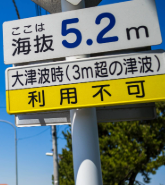The word epicenter was coined in the mid-19th century to mean the point at the surface above the source of an earthquake. After discarding explanations, such as “thunderstorms in caverns” or “electrical discharges,” earthquakes were thought to be underground chemical explosions.
Source: USGS
Two historical earthquakes—1891 in Japan and 1906 in California—made it clear that a sudden movement along a fault caused earthquakes. The fault that broke in 1906 was almost 300 miles long. It made no sense to consider the source of the earthquake as a single location. The word epicenter should have gone the way of other words attached to redundant scientific theories like “phlogiston” or the “aether.”
But instead the term epicenter underwent a strange resurrection.
With the development of seismic recorders at the start of the 20th century, seismologists focused on identifying the time of arrival of the first seismic waves from an earthquake. By running time backwards from the array of recorders they could pinpoint where the earthquake initiated. The point at the surface above where the fault started to break was termed the “epicenter.” For small earthquakes, the fault will not have broken far from the epicenter, but for big earthquakes, the rupture can extend hundreds of kilometres. The vibrations radiate from all along the fault rupture.
In the early 20th century, seismologists developed direct contacts with the press and radio to provide information on earthquakes. Savvy journalists asked for the location of the “epicenter”—because that was the only location seismologists could give. The term “epicenter” entered everyday language: outbreaks of disease or civil disorder could all have “epicenters.” Graphics departments in newspapers and TV news now map the location of the earthquake epicenter and run rings around it—like ripples from a stone thrown into a pond—as if the earthquake originates from a point, exactly as in the chemical explosion theory 150 years ago.
The bigger the earthquake, the more misleading this becomes. The epicenter of the 2008 Wenchuan earthquake in China was at the southwest end of a fault rupture almost 250km long. In the 1995 Kobe, Japan earthquake, the epicenter was far to the southwest even though the fault rupture ran right through the city. In the great Mw9 2011 Japan earthquake, the fault rupture extended for around 400km. In each case TV news showed a point with rings around it.
In the Kathmandu earthquake in April 2015, television news showed the epicenter as situated 100km to the west of the city, but in fact the rupture had passed right underneath Kathmandu. The practice is not only misleading, but potentially dangerous. In Nepal the biggest aftershocks were occurring 200km away from the epicenter, at the eastern end of the rupture close to Mt Everest.
How can we get news media to stop asking for the epicenter and start demanding a map of the fault rupture? The term “epicenter” has an important technical meaning in seismology; it defines where the fault starts to break. For the last century it was a convenient way for seismologists to pacify journalists by giving them the easily calculated location of the epicenter. Today, within a few hours, seismologists can deliver a reasonable map of the fault rupture. More than a century after the discovery that a fault rupture causes earthquakes, it is time this is recognized and communicated by the news.






